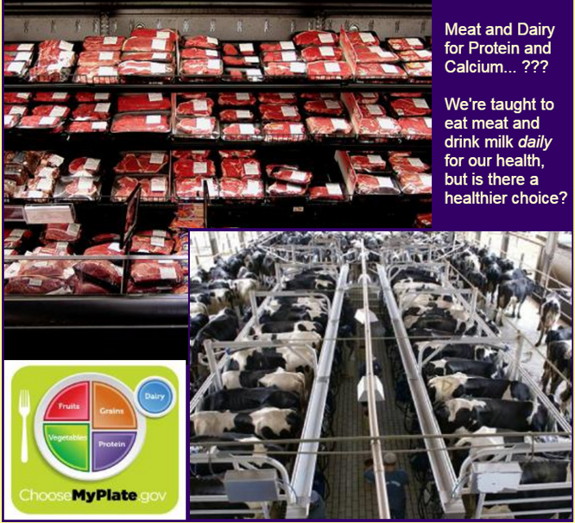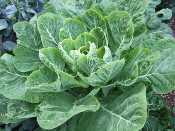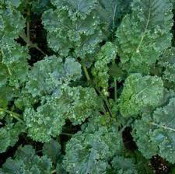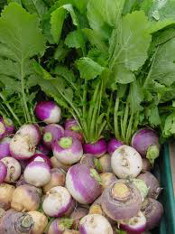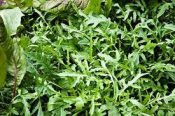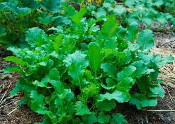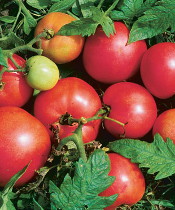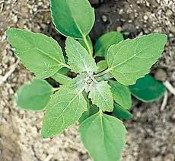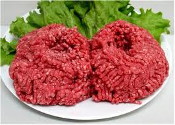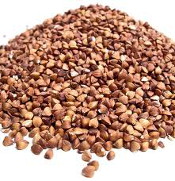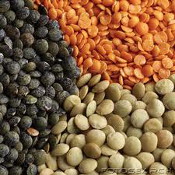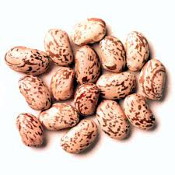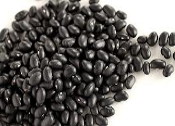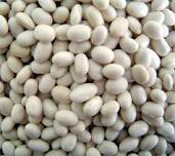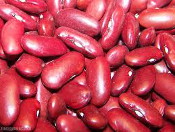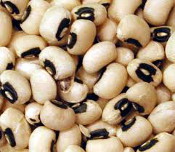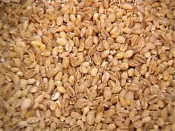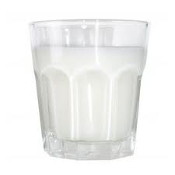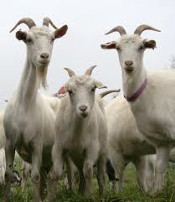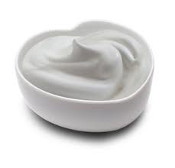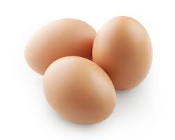Meat, Dairy, Eggs… and Choices
The USDA shows a glass of milk, labeled “dairy” for healthy bones from calcium. The dairy lobby is delighted.
Meat producers use their influence to give us the impression that the best protein comes from meat.
But just as it wasn’t true when our government told us there were Weapons of Mass Destruction in Iraq, and we needed to go to war, it isn’t true when the government tells us we need to eat meat every day to be healthy. Not true by a long shot.
Meat has an acidifying effect in your body ~ it lowers your body pH. Low pH is associated with heart and blood vessel disease, cancer, diabetes and many other serious illnesses. Low pH is far less healthy than a high or alkalizing pH. (This may not be as true for people with type O blood, according Dr. D’Adamo’s Eat Right for Your Blood Type.) Milk and other dairy products have the same effect on your pH as does meat.
For a better understanding of the danger in a diet high in meat and dairy, watch Forks Over Knives.
Today meat has the added danger of antibiotics needed to keep animals alive in unhealthy factory farms. That’s antibiotics we ingest when we eat meat.
We may choose to eat healthy, but a father or mother may have eaten according to USDA advice and now needs care. Or, our child may have diabetes or suffer from obesity.
Taking an even wider view, the amount of meat we eat has an affect on the world. Industrial meat production in the United States has an impact on the earth ~~ Primary gases responsible for world wide warming come from the massive amounts of manure produced by food animals in factory farms invisible to us unless we live near a complex.
Food packaging shows us animals and red barns. But that’s the past. Today chickens are kept in vast, dark buildings that farmers pay hundreds of thousands of borrowed dollars to build. Cows are fed corn, when their natural diet is grass. So cows now carry e coli, which is deadly, especially to kids.
When cows are allowed to go outside and eat grass for a couple of weeks the e coli disappears. Yet instead of letting cows have a few weeks of healthy life, they are slaughtered without reverence for their lives. Their meat is washed in ammonia to kill the e coli. How lovely is that?
Calcium in vegetables vs Calcium in milk
Here are some easy to grow vegetables that are good for calcium. If you don’t have space for a garden, you can easily grow tasty vegetables in containers, anywhere with sunshine that you like. Maybe next to your door: a kitchen container garden.
When I lived in London I loved spring greens, I didn’t know that they’re called collards here in the U.S.
1 cup chopped ~~ 357 mg.
1 cup milk ~~ 300 mg.
Kale is a curly leafed vegetable that is fast growing. I like Russian kale with its red mid vein, but now I’m thinking it may not have as much calcium as other kinds.
1 cup chopped ~~ 170 mg.
1 cup milk ~~ 300 mg.
More calcium in vegetables is usable
With kale and other vegetables your body can use/absorb 50% to 70% of the calcium. It can use only 30% of the calcium in milk. Run the numbers and with kale you get about 107 mg of calcium, while with milk you get 91 mg. Kale wins!
The other thing with calcium is that your body needs vitamin D in order to use calcium. 30 minutes in the sun, without sunscreen, does the trick. If you are using astaxanthin, you’ll not get burned and not have to screen from the sun.
Milk comes fortified with D, but apparently not enough given that sun screen use and vitamin D deficiency go hand in hand.
Again, Easy to grow. Plus, since you can pick greens from different plants they last a long time. And, in the end you can eat the turnip, too.
1 cup chopped ~~ 105 mg.
1 cup milk ~~ 300 mg.
Remember the thing about veggie calcium being easier for our bodies to absorb and use.
.
Grows like a wonderful, peppery weed. It will come up year after year if you let it go to seed and give it water.
1 cup chopped ~~ 32 mg.
.
When full grown, Rapini’s spiked leaves surround clusters of green buds that resemble small heads of broccoli..
1 cup chopped ~~ 516 mg.
.
Tomatoes are so much fun to grow. I love growing cherry tomatoes because I can pop them into things without much chopping. I also grow brandywine.
Tomatoes are great in salads, sandwiches, soups, and on pasta. Yum!
1 cup chopped ~~ 18 mg.
1 cup tomato paste ~~ 90 mg.
.
On my first visit to Las Vegas, New Mexico an American Indian pointed out “Indian Spinach.” He said I should know it. It’s tasty and common. You most likely have some growing in your yard.
1 cup cooked ~~ 464 mg.
I cup ~~ 41 mg magnesium
It also provides 6 grams protein
Oxalic Acid in Lambs Quarters
Lamb’s quarters has more oxalic acid in it than most other plants. That can be harmful if you eat very large amounts. When eating young lamb’s quarters as salad, it’s best to drink water to wash out excess acid and any that binds with some of the calcium and magnesium. I’ve been eating lamb’s quarters for decades and only recently learned that it can contribute to kidney stones for some people. I don’t drink soda pop, maybe that’s what saved me in the long run. In any case, I love Lamb’s Quarters.
Protein in Meat vs Protein in Beans
Compare meat protein to that of non-meat sources below. Meat goes bad, but non-meat protein is easy to store for a long time.1 oz. ~~ 4.8 grams protein
1 oz. ~~ 5 mg calcium
1 oz. ~~ 4.8 mg magnesium
1 cup ~~ 75.6 mg potassium
Despite its name buckwheat is not wheat. Buckwheat is a good source of fiber and protein, providing all the amino acids. I add it to my brown rice!
1 cup ~~ 22.5 grams protein
1 cup ~~ 30.6 mg calcium
1 cup ~~ 393 mg magnesium
1 cup ~~ 782 mg potassium
.
These little legumes are great in soups, even in patties, because of their flavor and because of their protein and amino acid content.
1 cup ~~ 18 grams protein
1 cup ~~ 38 mg calcium
1 cup ~~ 71 mg magnesium
1 cup ~~ 731 mg potassium
Potassium is plentiful in beans, not so in meat
Notice how beans have protein and lots of potassium, while meat has little potassium. This is important because potassium is essential for the health of our cells ~~ which are basic to our overall health. When we are at rest our cells are still using 20% to 40% of our energy to remain in healthy shape. To a large extent that depends on potassium. Essential Potassium ~ Read more.
How do cells use potassium?
Here’s how it works: Potassium is the principal positive ion in cell fluid. Sodium is the principal negative ion in the fluid outside cells. Potassium concentrations are 30 times higher inside than outside cells, while sodium concentrations are ten times lower inside than outside cells.
The differences create an electrochemical gradient known as the membrane potential. A cell maintains its membrane potential by pumping an exchange of sodium and potassium. That’s the 20%-40% of the resting energy expenditure.
The large proportion of energy dedicated to maintaining sodium/potassium concentration gradients emphasizes the importance of this function in sustaining life. Tight control of cell membrane potential is critical for nerve impulse transmission, muscle contraction, and heart function.
A potassium deficiency interrupts the cells’ work and leads to fatigue, muscle weakness and cramps, and intestinal paralysis, which may lead to bloating, constipation, and abdominal pain. Severe deficiency may result in muscular paralysis or abnormal heart rhythms (cardiac arrhythmias) that can be fatal .
If you buy these dry they will greatly reduce your food budget, but they take time to cook. Pre-soaking helps.
1 cup ~~ 15 grams protein
1 cup ~~ 78 mg calcium
1 cup ~~ 85 mg magnesium
1 cup ~~ 746 mg potassium
.
A favorite in New Mexican cuisine, the dry ones are a great way to stretch your food budget.
1 cup ~~ 15 grams protein
1 cup ~~ 46 mg calcium
1 cup ~~ 120 mg magnesium
1 cup ~~ 611 mg potassium
On my first trip to Chicago as a young woman I had a bowl of navy bean soup I’ve never forgotten. Very good and nutritious.
1 cup ~~ 15 grams protein
1 cup ~~ 126 mg calcium
1 cup ~~ 96 mg magnesium
1 cup ~~ 708 mg potassium
This is the only bean I always buy canned. Kidney bean, orange slice and onion salad is So good.
1 cup ~~ 15 grams protein
1 cup ~~ 62 mg calcium
1 cup ~~ 74 mg magnesium
1 cup ~~ 717 mg potassium
Uncooked beans pose risks
NOTE ~~ Legumes must be soaked and cooked, if not they contain enzyme blockers that inhibit protein and carbohydrate metabolism. Also, legumes contain dangerous lectins, phytic acid and saponins that are deactivated by cooking. Lectins, for instance, play a role in certain auto-immune disorders such as rheumatoid arthritis and inflammatory diseases.
Green beans always need to be cooked until soft otherwise they are toxic! Raw beans are poisonous (have a degree of toxicity) because they contain prussic acid, which is de-activated only by cooking.
Said to bring good luck if eatten on New Years, and they seem to, I like that they cook fairly quickly.
1 cup ~~ 13 grams protein
1 cup ~~ 41 mg calcium
1 cup ~~ 91 mg magnesium
1 cup ~~ 477 mg potassium
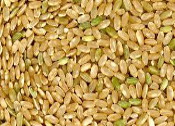 Brown Rice (I like short grain) ~
Brown Rice (I like short grain) ~
Switching to brown rice from pasta, bread and potatoes cured my gastrointestinal problems from low B12.
1 cup ~~ 5 grams protein
1 cup ~~ 19 mg calcium
1 cup ~~ 86 mg magnesium
1 cup ~~ 154 mg potassium
Barley doesn’t get as soft as rice when it cooks. So when I want to add texture to soups I add barley.
1 cup ~~ 3.5 grams protein
1 cup ~~ 17.3 mg calcium
1 cup ~~ 34.5 mg magnesium
1 cup ~~ 146 mg potassium
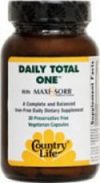 One-A-Day is paltry by comparison
One-A-Day is paltry by comparison
Country Life Daily Multiple Vitamin ~
I took these thinking they were great, before I saw their comparative nutritional poverty.
20 mg calcium
15 mg magnesium
10 mg potassium
I don’t like the antibiotics given to factory farm, overcrowded dairy cows to keep them alive in the unnatural filth in which they are forced to live.
1 cup ~~ 7.9 grams protein
1 cup ~~ 276 mg calcium
1 cup ~~ 24.4 mg magnesium
1 cup ~~ 349 mg potassium
.
I love goat cheese and goat yogurt,but not so much goat’s milk in my coffee despite the fact it provides excellent nutrition.
1 cup ~~ 8.7 grams protein
1 cup ~~ 327 mg calcium
1 cup ~~ 34.2 mg magnesium
1 cup ~~ 498 mg potassium
.
I had less asthma after eating 6oz. of yogurt daily for 3 months, later I had none. Studies show that Lactobacillus in yogurt regulates emotional behavior via GABA receptors in the brain with “significant effect.”
Cup plain, lowfat ~~ 12.9 grams protein
Cup plain, lowfat ~~ 448 mg calcium
Cup plain, lowfat ~~ 41.7 mg magnesium
Cup plain, lowfat ~~ 573 mg potassium
I’m a fan of how eggs aid sleep. I’m not a fan of the antibiotics given to factory farm, overcrowded chickens to keep them alive in the filth.
1 lrg. fried ~~ 3 grams protein
1 lrg. fried ~~ 27.1 mg calcium
1 lrg. fried ~~ 6 mg magnesium
1 lrg. fried ~~ 67.6 mg potassium

